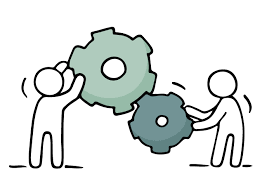Crafting Delight: Innovation and Customer-Centric Product Design
In today's competitive landscape, creating products that truly resonate with customers is paramount. This requires a potent blend of innovation and a deeply customer-centric design philosophy. By prioritizing these elements throughout your product development lifecycle, you cultivate not just satisfied customers, but loyal advocates who actively champion your brand. Let's explore the key strategies that transform product development into a journey of delight.
1. Deeply Understanding the Customer: The Foundation of Delight
Before even a single design sketch is made, comprehensive customer understanding is essential. This involves rigorous market research, incorporating surveys, focus groups, and in-depth interviews. The goal is not simply to identify needs, but to uncover the often unspoken desires and pain points that drive customer choices. By truly empathizing with your target audience, you lay the groundwork for innovative solutions that authentically address their needs.
2. Unleashing Creativity: Brainstorming and Ideation
Armed with a thorough understanding of customer needs, the next phase is collaborative ideation. Gather a diverse team, foster a culture of open communication, and encourage out-of-the-box thinking. Brainstorming sessions should be lively and uninhibited, allowing for a free flow of ideas, no matter how unconventional. The key is to generate a wide range of potential solutions, before refining them through rigorous evaluation.
3. Iterative Refinement: Prototyping and Testing
Turning concepts into tangible realities requires prototyping. Develop functional prototypes, even if rudimentary, to test with potential users. This iterative process of building, testing, and refining based on user feedback is crucial. The feedback loop allows for continuous improvement, ensuring your product evolves to meet real-world needs and expectations. This agile methodology is key to creating a truly customer-centric product.
4. Mapping the Customer Journey: A Holistic Approach
Consider the entire customer journey, from initial awareness to post-purchase engagement. Mapping this journey helps identify key touchpoints where you can enhance the customer experience and differentiate your offering. By visualizing the complete customer interaction, you can identify opportunities for value addition and create a seamless, positive experience at every stage.
5. Prioritizing User Experience (UX): Intuitive and Engaging Design
A superior user experience (UX) is no longer a luxury but a necessity. Intuitive navigation, user-friendly interfaces, and visually appealing aesthetics are essential. A delightful UX ensures ease of use and an overall pleasurable interaction, contributing significantly to customer satisfaction and loyalty. Invest in UX professionals to guide your design choices and ensure an enjoyable user journey.
6. Data-Driven Decisions: Insights for Continuous Improvement
Leverage data analytics to make informed decisions. Track customer behavior, analyze preferences, and monitor market trends. Data-driven insights provide a clear picture of what works, what needs improvement, and where future innovation should focus. This analytical approach allows for continuous refinement and optimization of the product based on real-world usage patterns.
7. Global Perspectives: Designing for a Diverse World
In today's interconnected world, consider global perspectives. Understand cultural nuances, social contexts, and economic realities of your target markets. Tailoring your product to meet the specific needs of diverse customer segments demonstrates sensitivity and respect, fostering greater trust and engagement.
8. Harnessing Technology: Enhancing Product Capabilities
Embrace technological advancements to enhance product features and functionality. Explore how emerging technologies like Artificial Intelligence (AI), the Internet of Things (IoT), and Virtual Reality (VR) can improve the product's capabilities and provide a more immersive and engaging user experience. Innovation is not just about new features, but about how technology can seamlessly integrate to improve the overall customer interaction.
9. Co-creation and Collaboration: Engaging Customers in the Process
Invite customers to participate in the product development process. Co-creation initiatives foster a sense of ownership and provide valuable, firsthand insights. By engaging customers as active partners, you gain valuable feedback and create a stronger connection with your audience.
10. Social Listening: Tuning into Customer Conversations
Actively monitor and engage in social media conversations. Listen to customer feedback, address concerns, and utilize this information to guide innovation and improvement. Social media provides a rich source of qualitative data that can inform your product strategy and enhance your brand reputation.
11. Design Thinking: A Human-Centered Approach
Adopt a design thinking methodology which emphasizes empathy, collaboration, and experimentation. This human-centered approach encourages you to deeply understand customer needs and generate truly innovative solutions. By prioritizing empathy, you can uncover hidden customer needs and develop products that exceed expectations.
12. Disruptive Innovation: Reimagining the Possibilities
Strive for disruptive innovation—the kind of groundbreaking change that reshapes markets. Look for opportunities to challenge the status quo and develop truly transformative products. Analyze how market-leading companies have achieved disruptive success and learn from their strategies. Continuous innovation and a proactive approach are essential to staying ahead of the curve.
13. Learning from Failures: A Path to Growth
Embrace failures as valuable learning opportunities. Not every product will be a resounding success, but analyzing setbacks provides crucial insights for future innovation. A culture of learning from mistakes fosters resilience and accelerates the development of superior products.
14. Continuous Improvement: A Commitment to Excellence
Innovation is an ongoing journey, not a destination. Constantly strive to improve and refine your products based on customer feedback and market trends. A commitment to continuous improvement demonstrates your dedication to exceeding customer expectations and building lasting customer loyalty. This proactive approach keeps your brand relevant and competitive.
By placing the customer at the heart of your product development strategy, you cultivate a powerful synergy between innovation and customer satisfaction. This approach creates not just products, but experiences that delight, fostering brand loyalty and driving long-term success. Are you ready to embark on this journey of customer-centric innovation?
```








No comments yet. Be the first to share your thoughts!